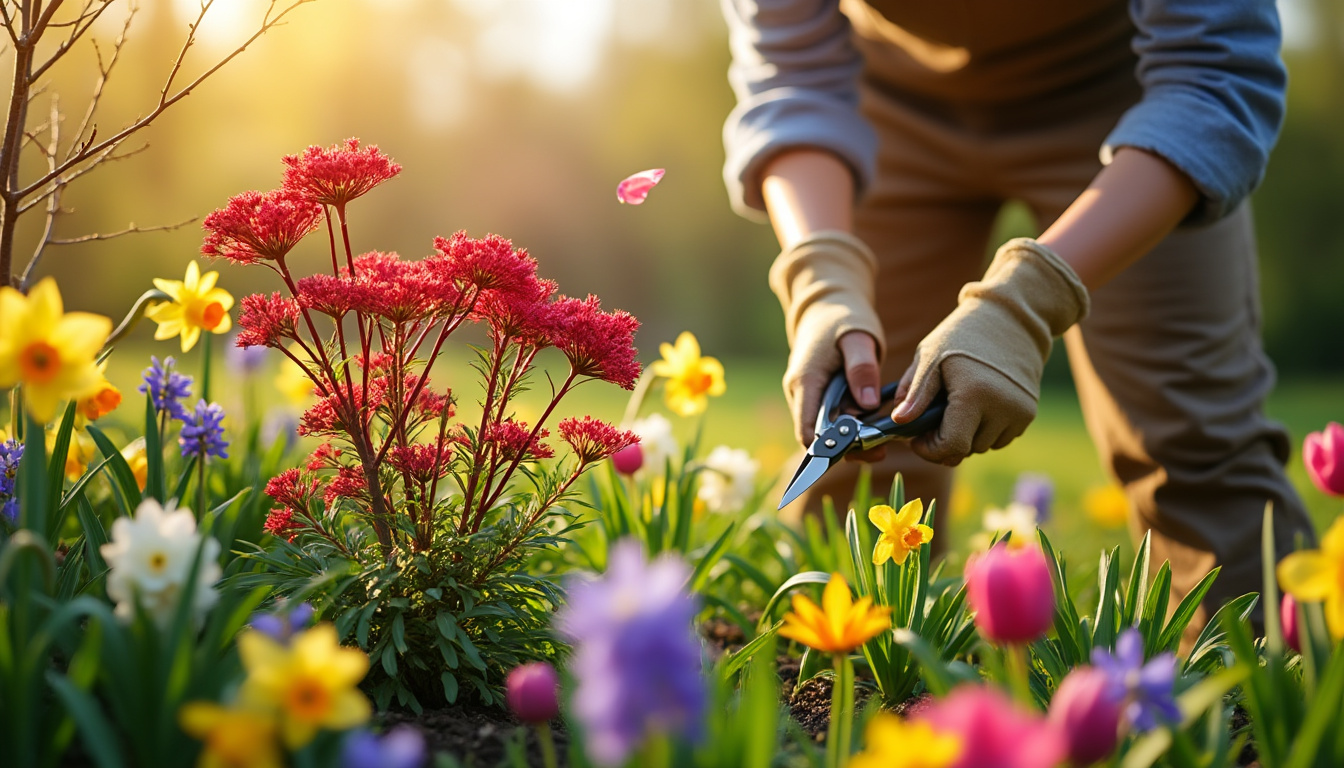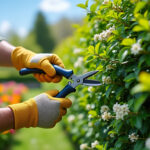When gardening enthusiasts consider the delicate yet robust Photinia x fraseri ‘Red Robin’, timing becomes essential for optimal growth and health. Regular pruning not only enhances the plant’s aesthetic appeal but also ensures its vitality through effective management of its growth patterns. Understanding the best times to prune, as well as the signs indicating the need for a trim, plays a pivotal role in maintaining this striking shrub. This article elaborates on various aspects of pruning the Red Robin, offering insights into the right seasons and techniques for thriving plants.
Understanding the Growth Cycle of Red Robin Photinia
The growth cycle of Red Robin is typically characterized by a vigorous burst of new growth in the spring, following its dormant period in winter. This seasonal pattern is influenced by climatic conditions and can vary slightly based on geographical location. Awareness of these growth cycles is crucial for determining effective pruning times.
As the Red Robin emerges from dormancy, late winter to early spring marks the most opportune moment for pruning. Pruning during this period encourages the shrub to redirect its energy toward new growth, resulting in the production of vibrant red foliage that has made this plant a favorite among landscapers. In fact, research suggests that pruning at this stage can enhance its flowering potential as well. Therefore, gardeners should pay close attention to local climate nuances and natural indicators from the plant itself.
Indicators for Pruning
Recognizing when to prune is as important as knowing how to prune. Several telltale signs suggest that a Red Robin requires attention. These include:
- 🌿 Dense Foliage: If the leaves are densely packed, light penetration may be insufficient, hampering photosynthesis.
- 🌱 Dead Branches: Swathes of branches that appear lifeless can be detrimental to overall plant health if not removed.
- 🐞 Pest Infestations: Presence of pests, such as aphids, can be a signal that the plant needs pruning to foster healthier growth.
Best Seasons for Pruning Red Robin Photinia
The annual cycle of Red Robin dictates specific seasons deemed best for pruning them effectively. Understanding these seasons helps ensure that plants recover optimally from trimming, retaining their health and beauty.
Spring Pruning: Timing and Techniques
As spring approaches and temperatures rise, between late March and early April is often regarded as the prime window for pruning chosen for Red Robin. This timing is strategic; it aligns with the onset of new growth.
Pruning at this time allows for:
- 🌼 Vigorous New Growth: Cutting back the plant encourages robust new shoots, enhancing foliage color.
- 🌞 Improved Air Circulation: Thinning out crowded branches alleviates competition for resources.
- ⚖️ Better Shape Maintenance: A well-shaped shrub not only looks pleasing but also grows more vigorously.
Fall Pruning: When to Avoid
While fall pruning can be beneficial, caution should be exercised. Ideally, it is recommended to avoid late fall cuts to prevent potential frost damage. Shaping the plant before it goes into dormancy can assist in preparing it for winter challenges but should be undertaken carefully. If pruning must occur in fall, it is best to do so well before the onset of cold weather, preferably in early to mid-fall.
Consider the potential risks involved with late pruning:
- ❄️ Frost Damage Risk: New growth resulting from late pruning may not have sufficient time to harden off before frost sets in.
- ➡️ Pest Attraction: Timing the pruning too late can leave new cuts vulnerable to pests that thrive in winter.
Effective Pruning Techniques for Red Robin
Once the opportune time for pruning Red Robin is identified, employing effective techniques is vital for fostering a healthy shrub. Understanding the tools and methods can lead to desired outcomes.
Tools Essential for Pruning
Having the right tools on hand can enhance the pruning experience significantly. Consider the following essential tools:
- ✂️ Pruning Shears: Ideal for trimming smaller branches and shaping the plant.
- 🪓 Loppers: Effective for cutting thicker branches up to one inch in diameter.
- 🔪 Saw: Necessary for larger branches that require additional cutting power.
- 🧤 Safety Gear: Gloves and eye protection are crucial for safety.
Step-by-Step Pruning Guide
The process of pruning can be broken down into manageable steps:
- 🔍 Assess the shrub’s shape and overall health.
- ✂️ Remove any dead or diseased branches.
- 🌿 Thin out areas with dense foliage to enhance air circulation.
- ✏️ Shape the bush according to the desired height and width.
- 🌱 Cut back to a healthy bud or branch to promote new growth.
When is the best time to prune your hibiscus?
Common Problems and Solutions Post-Pruning
Returning to a healthy state post-pruning is critical for Red Robin’s success. However, it faces a range of post-pruning challenges that need to be addressed promptly.
Identifying Common Issues
Among the most common problems encountered by Red Robin are:
- 🐞 Pests: Aphids and spider mites can compromise plant health.
- 🍂 Fungal Infections: Look for signs of leaf spots or wilting as indicators.
- ✨ Root Rot: Caused by overwatering and poor drainage, it can be detrimental if unaddressed.
Pruning as a Preventive Measure
Regular pruning serves as a key measure to help prevent many of these common issues:
- ✅ Reduces Overcrowding: This helps mitigate pest infestations.
- 💨 Enhances Air Circulation: Improved air flow reduces the probability of disease.
- 🌟 Encourages Healthy Growth: By creating a well-maintained environment, the shrub can thrive despite challenges.
Post-Pruning Care for Thriving Red Robin
Once pruning is complete, focusing on post-care is essential for sustaining the plant’s health and encouraging new growth.
Basic Aftercare Techniques
Proper aftercare ensures that your Red Robin rebounds positively after pruning:
- 💧 Consistent Moisture: Regular watering without creating waterlogged conditions is vital.
- 🌱 Fertilization: A balanced fertilizer aids new growth, setting the stage for future flourishing.
- 👀 Regular Monitoring: Keep an eye on the shrub for signs of stress and adjust care routines as necessary.
Importance of Vigilance
Having a watchful eye on the Red Robin post-pruning can make a significant difference in outcomes. Observing for signs of wilting, discoloration or other anomalies provides an opportunity for timely interventions that nurture the plant’s vitality.
The dynamic nature of gardening requires intuitive responses to the plant’s needs, ensuring that at every stage of growth, the Red Robin can showcase its vibrant foliage and become a vibrant addition to any landscape.
FAQ
When is the best time to prune Red Robin?
The optimal time to prune Red Robin is late winter to early spring, specifically between late March and early April.
How often should Red Robin be pruned?
Pruning once or twice a year is recommended for maintaining shape and promoting vigorous new growth.
What tools are required for pruning Red Robin?
Essential tools include pruning shears, loppers, and a saw, along with safety gear for protection.
Can fall pruning be beneficial?
Fall pruning can be done but should be avoided late in the season to prevent frost damage to new growth.
How does pruning improve air circulation for Red Robin?
Pruning helps reduce dense foliage, allowing better airflow, which minimizes the risk of fungal infections and other diseases.















